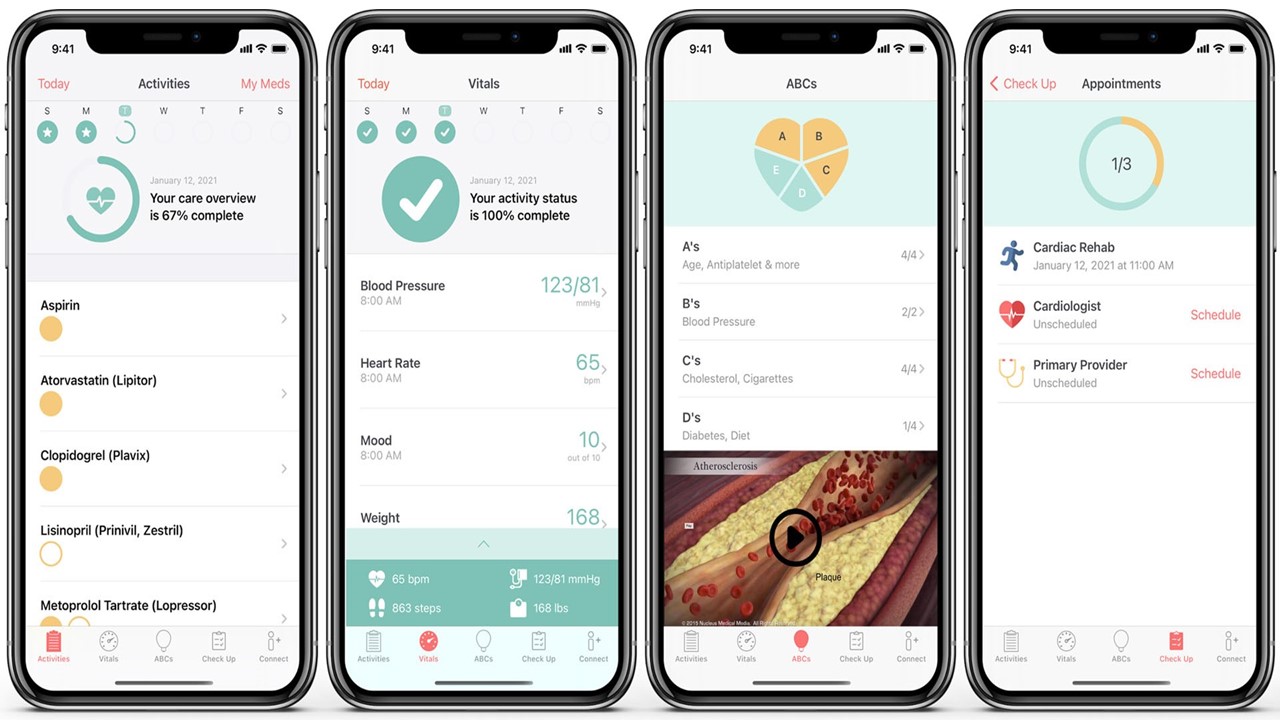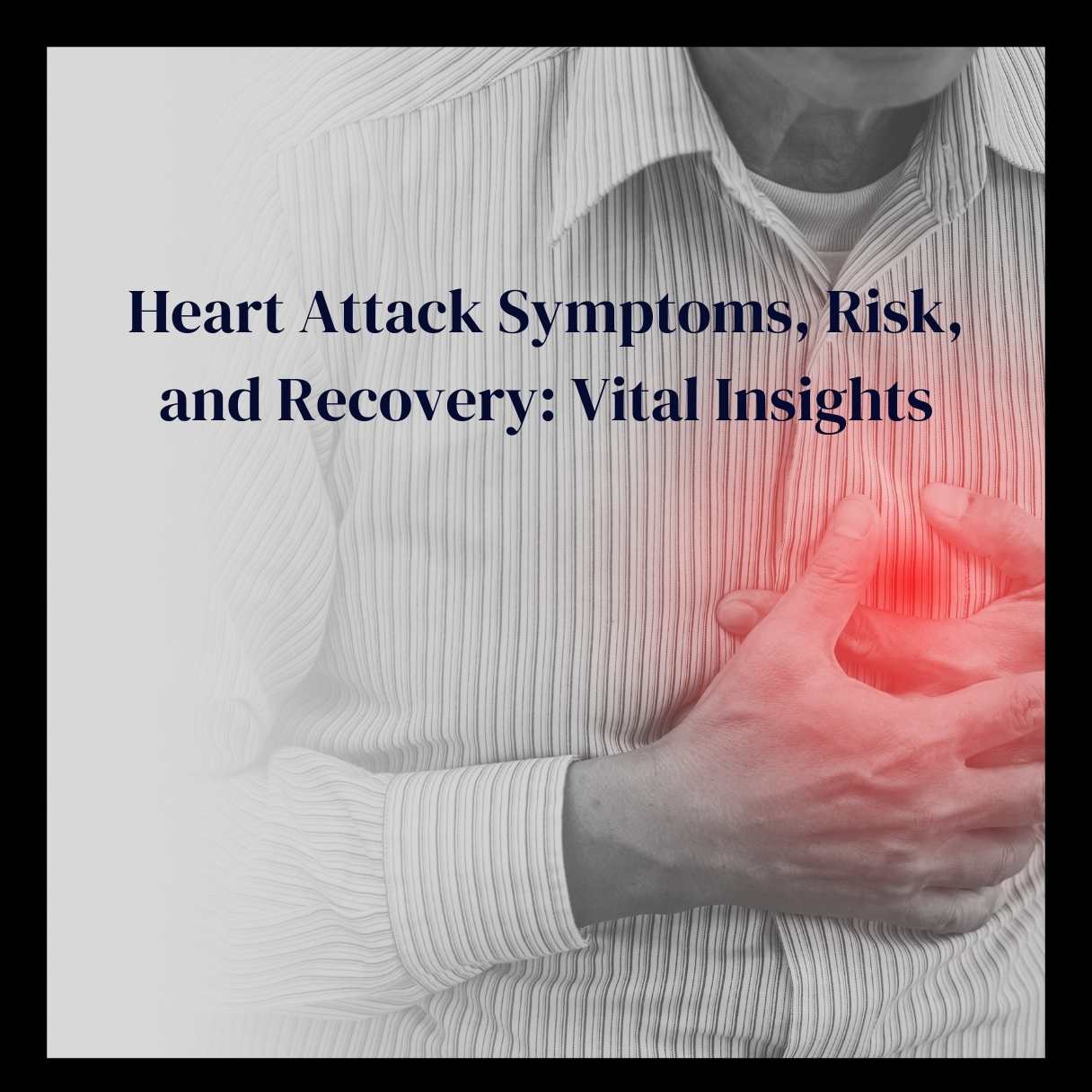Heart attack symptoms include chest pain, shortness of breath, and fatigue. Risk factors comprise smoking, high blood pressure, and obesity; recovery involves lifestyle changes and possibly medication.
Heart attacks strike when blood flow to the heart muscle is abruptly blocked, starving it of oxygen and causing damage. Recognizing the warning signs can save lives, making awareness crucial. Smoking, high cholesterol, diabetes, and physical inactivity are among the top contributors to heart attack risk.
Recovery from a heart attack typically entails a combination of medical treatment, cardiac rehabilitation, and adopting healthier habits. It’s a journey that requires patient commitment, professional guidance, and often a reevaluation of one’s daily routine to prevent future episodes. Encouraging a swift response to symptoms and promoting preventive measures is key in reducing heart attack incidences and improving outcomes for patients.


Credit: www.hopkinsmedicine.org
Understanding Heart Attack: A Medical Overview
Heart attacks are a leading cause of death globally, striking suddenly and often without warning. Understanding the mechanics of a heart attack, its various types, and the subsequent effects can be critical for prevention and recovery. Let’s explore what happens inside your body during this medical emergency.
Defining A Heart Attack: What Happens Inside Your Body?
A heart attack, medically referred to as a myocardial infarction, occurs when blood flow to a part of the heart muscle is abruptly stopped. This blockage is usually the result of plaque buildup in the coronary arteries, a condition known as atherosclerosis. Without oxygen-rich blood, heart muscle cells begin to die, leading to permanent damage.
Types Of Heart Attacks: Recognizing The Variations
Heart attacks can vary greatly in severity and presentation. The main types include:
- STEMI (ST-segment elevation myocardial infarction): This severe form features a complete blockage of the coronary artery.
- NSTEMI (Non-ST segment elevation myocardial infarction): Characterized by a partial blockage, this type can still cause significant heart damage.
- Silent heart attack: Silent or unnoticed attacks can occur without the classic symptoms and are often detected later through testing.
The Immediate Impact: Effects Of A Heart Attack On The Heart Muscle
Drawing focus to the immediate impact, a heart attack can wreak havoc on your heart muscle. The longer the heart tissue remains without oxygen, the greater the extent of the damage. Effects include:
- Cell death: As oxygen supply is cut off, affected muscle cells begin to die within minutes.
- Reduced function: The heart’s pumping efficacy may diminish, leading to potential heart failure.
- Arrhythmias: Dangerous heart rhythm abnormalities can develop due to damaged heart tissue.
Immediate treatment is critical for survival and minimizing heart muscle damage. Recovery often includes lifestyle changes, medication, and sometimes surgical interventions to improve heart function and prevent future incidents.
Recognizing The Symptoms: Early Warning Signs To Watch Out For
Recognizing the symptoms of a heart attack can be the difference between life and death. Early warning signs are the body’s alarm system, alerting you to take immediate action. Understanding these signs and knowing whether they’re typical or atypical, as well as how they may vary between genders, is crucial. It’s essential to know when to seek help to protect yourself and your loved ones from the long-term consequences of a heart attack. Let’s explore these symptoms more closely.
Typical Vs. Atypical Symptoms: A Comparative Look
Typical heart attack symptoms are well-known and widely recognized. They include:
- Chest pain or discomfort that feels like pressure, squeezing, fullness, or pain
- Shortness of breath, which may occur with or without chest discomfort
- Pain or discomfort in one or both arms, the back, neck, jaw, or stomach
- Other symptoms such as breaking out in a cold sweat, nausea, or lightheadedness
On the other hand, atypical symptoms might be subtler and not immediately linked to a heart attack. They include:
- Mild discomfort in the chest that might come and go
- Stomach pain, indigestion, or heartburn-like symptoms
- Anxiety or a feeling of impending doom
- Dizziness or fainting with no obvious reason
- Sudden extreme fatigue without exertion
Symptoms In Men Vs. Women: Gender-specific Considerations
Symptoms of a heart attack can present differently in men and women. While both might experience typical symptoms, there are key differences to watch out for:
| Men | Women |
|---|---|
| Chest pain, which is often described as pressure, fullness, or a squeezing sensation | Less likely to experience severe chest pain; more likely to report atypical symptoms like shortness of breath, nausea, and back or jaw pain |
| Shortness of breath | Fatigue, sometimes for days or even weeks before the attack |
| Symptoms generally occur suddenly and can be very intense | Symptoms may be more gradual or come and go over several days |
When To Seek Help: Timing And Urgency In Responding To Symptoms
Heart attack symptoms require immediate attention. If you or someone you know experiences the following, call emergency services right away:
- Unexplained chest pain that lasts more than a few minutes
- Persistent breathlessness not related to physical exertion
- Severe discomfort in the upper body, including the arms, back, neck, jaw, or stomach
- Sudden dizziness, cold sweat, or nausea
Timing is critical for survival and recovery. Quick response not only improves the chances of survival but also minimizes potential damage to the heart muscle. Never ignore symptoms or delay seeking medical help, even if you are not certain it’s a heart attack.
Risk Factors And Prevention: Reducing Your Heart Attack Risk
Understanding the risks and taking proactive steps towards heart health can significantly lower the chances of experiencing a heart attack. Recognizing the difference between modifiable and non-modifiable risks, embracing a heart-healthy lifestyle, and managing existing chronic conditions are key in heart attack prevention. Let’s explore the strategies that can help you maintain a strong and healthy heart.
- Smoking: Quitting smoking can dramatically reduce heart attack risk.
- Obesity: Maintaining a healthy weight through diet and exercise lowers strain on the heart.
- Stress: Managing stress through mindfulness or therapy can mitigate its negative effects on the heart.
Diet and exercise form the foundational pillars of heart attack prevention. A balanced diet rich in fruits, vegetables, whole grains, and lean proteins, paired with regular physical activity, can vastly improve cardiovascular health.
| Healthy Diet Components | Exercise Recommendations |
|---|---|
|
|
Chronic conditions such as diabetes, high blood pressure, and high cholesterol increase the risk of a heart attack. Effective management of these conditions through medication and regular medical care is crucial. Adherence to prescribed treatments and ongoing communication with healthcare professionals can prevent complications and promote heart health.
- Regular check-ups: Essential to monitor and adjust treatments.
- Medication adherence: Following the prescribed medication regimen prevents condition exacerbation.
- Education: Being informed about the condition and treatment options empowers proactive health management.


Credit: onlinejcf.com
From Emergency To Recovery: Navigating The Post-heart Attack Journey
Experiencing a heart attack heralds a profound moment that divides life into before and after. The journey to recovery can be challenging yet transformative, necessitating a blend of urgent medical intervention, gradual rehabilitation, and lifestyle evolution. Understanding the trajectory from critical care to long-term adjustments is crucial for patients and their loved ones as they navigate through this complex process. This section delves into the different phases of recovery following a cardiac event, outlining what one can expect during hospital care, rehabilitation, and beyond.
Critical Care: What Happens In The Hospital Post-heart Attack
In the wake of a heart attack, immediate medical attention is paramount. The critical care phase involves stabilizing the patient’s condition, monitoring vital signs, and preventing further damage to the heart. Doctors often employ life-saving measures such as:
- Medications to dissolve blood clots and restore blood flow
- Cardiac catheterization to widen blocked arteries
- Coronary artery bypass grafting (CABG) for severe blockages
Once stabilized, patients typically remain in the hospital to ensure no complications arise and to commence the first steps of cardiac rehabilitation.
The Road To Rehabilitation: Phases Of Cardiac Recovery
Cardiac rehabilitation is a structured program designed to help patients regain strength and improve heart health post-attack. Under careful medical supervision, the journey from fragility to resilience encompasses several phases:
- Inpatient therapy focuses on gradual mobilization and education about heart health.
- Outpatient rehabilitation involves structured exercise programs, dietary advice, and emotional support.
- Maintenance encourages independent management of heart health through ongoing physical activity and risk factor control.
Each of these phases is critical for fostering a full recovery and preventing future cardiac events.
Living With Change: Long-term Lifestyle Adjustments And Support Systems
Surviving a heart attack often demands significant lifestyle changes to minimize the risk of recurrence. These long-term adjustments include:
| Lifestyle Factor | Recommended Changes |
|---|---|
| Diet | Incorporate heart-healthy foods, reduce sodium, and avoid trans fats. |
| Exercise | Engage in regular physical activity as advised by health professionals. |
| Smoking | Quit smoking to significantly decrease heart disease risk. |
| Stress Management | Utilize relaxation techniques and seek psychological support if needed. |
Beyond individual efforts, building a support system of family, friends, healthcare providers, and possibly a community of fellow heart attack survivors is critical for long-term success. Regular check-ups, participation in support groups, and open communication with healthcare teams all contribute to maintaining heart health and overall well-being.
Comprehending Recovery Outcomes And Quality Of Life Post-heart Attack
Factors Influencing Recovery: Prognosis Variables And Predictors
The path to recovery post-heart attack varies significantly from person to person. A multitude of factors can influence the prognosis:
- Medical history: Prior health issues can either complicate or steer the recovery process.
- Age: Younger patients usually have a more robust recovery owing to better overall health.
- Severity of the attack: Smaller, non-complicated heart attacks often result in a quicker recovery.
- Lifestyle factors: Smoking, diet, and exercise levels pre- and post-attack play a crucial role.
- Mental health: Depression and anxiety can negatively affect recovery and are important to address.
Patients can work closely with their healthcare providers to optimize recovery by addressing these variables wherever possible.
Heart Attack Survivors: Stories Of Resilience And Adaptation
Every survivor has a unique story filled with challenges and triumphs. These narratives are often marked by remarkable resilience and the capacity to adapt to new lifestyle changes. Many patients find renewed purpose by committing to heart-healthy habits and becoming advocates for cardiovascular health awareness. Their stories serve as profound examples for others going through similar situations and underscore the importance of psychological support alongside physical rehabilitation.
Advancements In Treatment: The Future Of Heart Attack Management And Prevention
The landscape of heart attack treatment and prevention is continually advancing. Breakthroughs in medical technology, medications, and therapeutic approaches offer hope for even better recovery outcomes. Areas such as personalized medicine, regenerative therapies, and minimally invasive surgical techniques are paving the way forward. With the integration of these advancements, patients can look forward to improved quality of life and a decreased likelihood of subsequent cardiac events.


Credit: www.binah.ai
Frequently Asked Questions On Heart Attack Symptoms, Risk, And Recovery
What Are The Odds Of Surviving A Heart Attack?
The survival rate for heart attack patients can exceed 90% with prompt medical attention. Factors like health condition and attack severity affect individual odds.
What Is 1 Rule For Surviving A Heart Attack?
Call 911 immediately if you suspect a heart attack. While waiting, chew and swallow an aspirin, unless allergic, to help prevent blood clots.
What Is The Recovery Time For A Heart Attack?
The typical recovery time for a heart attack ranges from several weeks to months, depending on the attack’s severity and individual health factors.
What Is The Average Life Expectancy After A Heart Attack?
The average life expectancy after a heart attack can vary, typically ranging from 5 to 15 years depending on factors such as age, health, and lifestyle changes.
Conclusion
Recognizing heart attack symptoms early can save lives. Adopting a healthy lifestyle reduces risk factors significantly. Post-event, recovery involves medical guidance, patience, and lifestyle adjustments. Stay informed, proactive, and heart-healthy for the best defense against cardiac incidents. Always consult with a healthcare professional for personalized advice.

